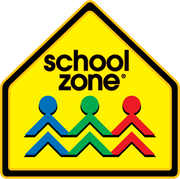Remember the beloved children's song, "It's a Small World (After All)"? The Sherman Brothers wrote it in 1963, following the Cuban Missile Crisis, and the world has become even smaller, and since the digital age, more "connected." Yet many kids sadly seem to know less and less about the world around them.
It's about much more than where
The website for the Victoria State Government in Australia says geographical literacy "refers to the ability to build and apply geographical knowledge, understanding and skills to explore, discuss, analyse and communicate geographical information, concepts and idea in a variety of ways."
Yet last year, Natalie Wexler, writing for Forbes, reported that "recent tests show American students are getting worse at history, geography, and civics—and they were pretty bad to begin with."
Studying geography helps build our understanding of maps, cultures, the environment, and so much more.
A little exploration opens big doors
Introducing young children to marvelous, fun facts about the world and discussing the relationships between people and places are important ways to create curious minds that stay life-long curious. A trio of themed "adventure" workbooks.



The learning also extends beyond the covers of the books. For example, in the first grade workbook kids learn that "The argan goats in Morocco can climb the argan trees to eat the fruit." Mom and dad can guide them in learning more about the goats, the trees, and Morocco on the Internet or in the library!
Discover "out there" and "right here at home"


Flipping open the pages of the Hidden Pictures Around the World Workbook, preschoolers and kindergartners find over 250 "little" pictures that await discovery inside rollicking bigger scenes, such as Festive Dragon Parade and Starlight Campout. See a wooly mammoth and its lively friends in Museum Exploration. Look more closely and other details emerge. In discovering the hidden objects, little ones also sharpen visual perception skills, eye-hand coordination, and attention to detail.
The State of Confusion app, available for Android devices as well as Windows download, and also on the Anywhere Teacher online learning system, can help inspire a love for and knowledge of our United States of America, while promoting social studies success! Start off learning key facts about the 50 states, including state capitals, state abbreviations, state flowers, state birds, state flags, and state nicknames. Next, put together a USA puzzle—a perfect game to learn state names, the location of each state, and which states are next to each other. Finally, test learning by selecting Quiz mode. It's fun for the whole family and great for road trips.

Asking questions takes kids places
Other resources that stretch kids' borders include an online National Geographic Family Field Guide titled, "Teach Kids to Question Everything," with question-based activities that can be accomplished in 5 minutes, 15 minutes, and 30 minutes. National Geographic also has a "Weird But True!" collection of fun facts categorized by age. And Matt Rosenberg, posting to ThoughtCo in 2018, offers a wide range of ideas and activities at "Geography for Kids: Help Your Child Learn Geography." Among the resources is a lovely video titled, "8 of Earth's Most Colorful Places."
The "Small World" song lyrics say, "There's so much that we share, that it's time we're aware," and now is the time to help kids learn more about the world they will one day help shape and influence.











